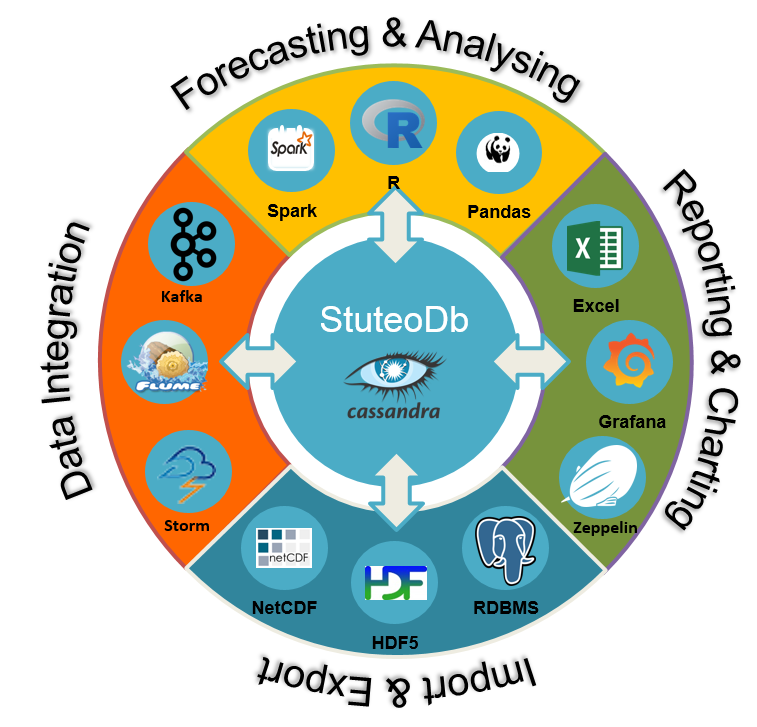StuteoDB’s goal is to be the right answer to nowadays Time Series’ challenges such as :
- Exponential growth of data volumes
- Constant search for increased speed / real time
- Multiple use cases in various specialized fields (IoT, DevOps, Finance, Industry 4.0, Health, …)
- Increasing need for analysis & prediction capabilities (based on historical data)
StuteoDB has developed an optimized & innovative (patented) data model, time indexation & query language to improve time series management capabilities & performances
StuteoDB is a Database Manager specialized in Time-Series based on Apache Cassandra, with embedded functionalities “taking the algorithm to the data”


